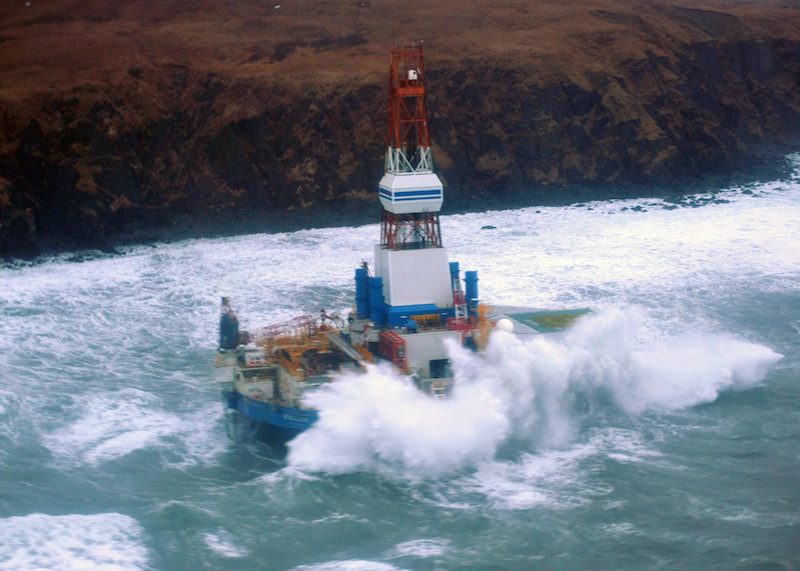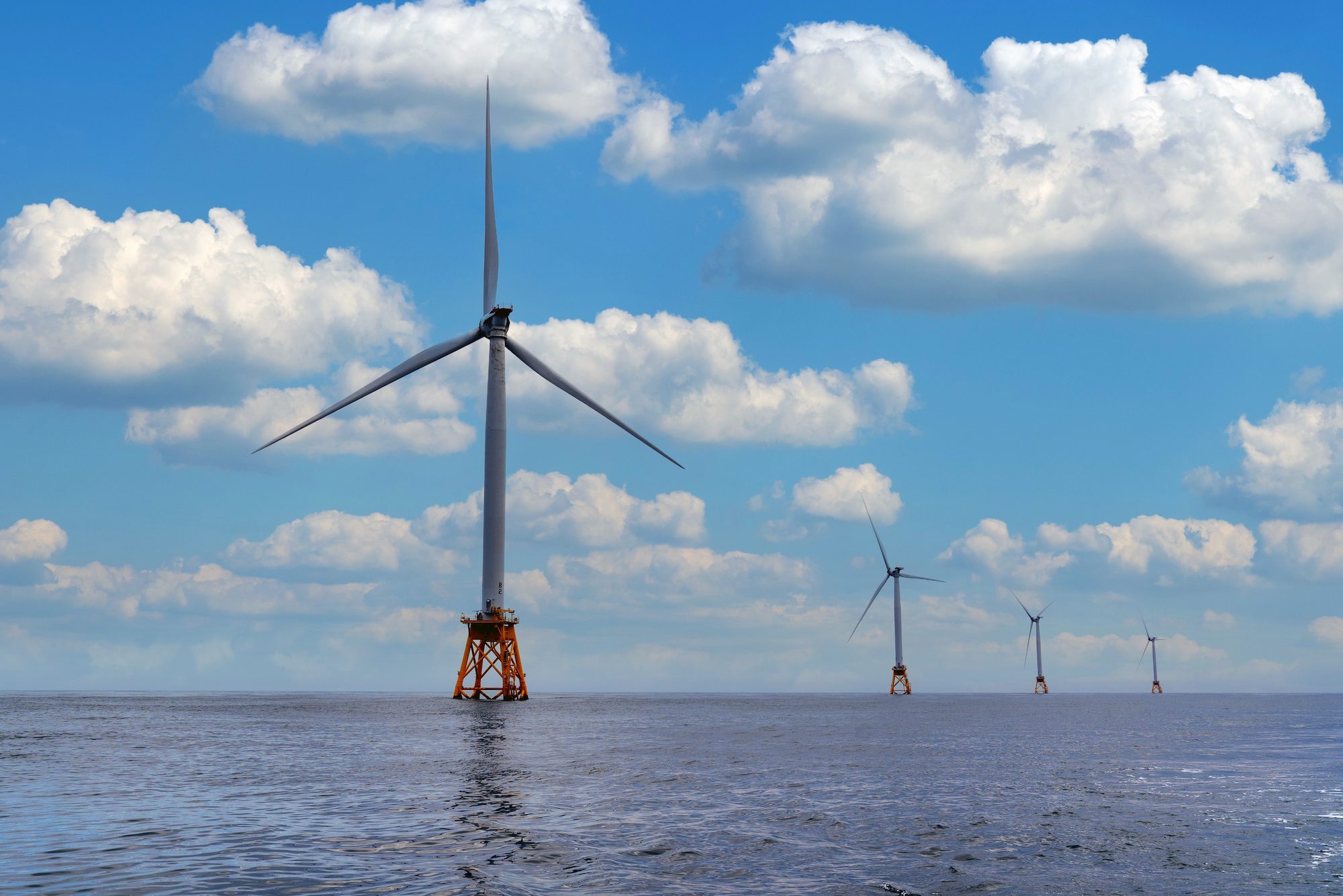Waves crash over the conical drilling unit Kulluk where it sat aground on the southeast side of Sitkalidak Island, Alaska, Jan. 1, 2013. U.S. Coast Guard photo by Petty Officer 3rd Class Jonathan Klingenberg.
U.S. Secretary of the Interior Ken Salazar on Thursday released the findings of a Departmental review of Shell’s troubled 2012 Arctic operations, painting a scathing picture of Shell and its inability to oversee and manage key components of its arctic program.
In January, Secretary Salazar directed the high-level review of Shell’s 2012 offshore drilling program in the Beaufort and Chukchi Seas – including the company’s preparations and emergency response operations – to identify challenges and lessons learned. The review focused on Shell’s inability to obtain certification of its containment vessel, the Arctic Challenger, on a timely basis; the deployment difficulty of the Arctic Challenger’s containment dome; and serious marine transport issues associated with both of Shell’s two drilling rigs, the Noble Discoverer and the Kulluk, including the grounding of the Kulluk off Kodiak Island.
“Exploration in the Arctic is a key component of the President’s all-of-the-above energy strategy, and is important to our understanding of the oil and gas potential in this frontier region,” said Secretary Salazar. “We have said all along that exploration in the challenging and sensitive environment of the Arctic must be done cautiously and subject to the highest safety and environmental standards. This assessment took a close look at Shell and the problems they encountered offshore Alaska last year, and makes important recommendations that Shell should follow as it resumes its Arctic program.”
The review team, led by Principal Deputy Assistant Secretary for Land and Minerals Management Tommy Beaudreau, included senior staff from several bureaus at the Department of the Interior as well as other federal agencies. The review team met with representatives from Shell as well as key contractors that Shell retained for work related to its Alaska operations, the State of Alaska, the Mayor of the North Slope Borough, and the Arctic Slope Regional Corporation. The review team also sought information from a broad range of other stakeholders and experts, including representatives from the oil and gas and maritime industries and conservation non-governmental organizations.
The assessment found that Shell entered the 2012 drilling season without having finalized key components of its program, including its Arctic Challenger containment system, which put pressure on Shell’s operations and schedule and limited Shell from drilling into oil-bearing zones last summer. Weaknesses in Shell’s management of contractors on whom they relied for many critical aspects of its program – including development of its containment system, emission controls to comply with air permits, and maritime operations – led to many of the problems that the company experienced, the report found.
“Shell simply did not maintain strong, direct oversight of some of its key contractors,” said Beaudreau. “Working in the Arctic requires thorough advance planning and preparation, rigorous management focus, a close watch over contractors, and reliance on experienced, specialized operators who are familiar with the uniquely challenging conditions of the Alaskan offshore. In some areas Shell performed well, but in other areas they did not, and Alaska’s harsh environment was unforgiving.”
On February 27, 2013, Shell announced it has decided to pause its exploration drilling activity for 2013 in the Beaufort and Chukchi Seas to focus on preparation of equipment and plans before resuming its Arctic exploration program.
The report recommends that the company should submit to the Department a comprehensive plan describing every phase of its operation from preparations through demobilization. The report also recommends that Shell complete a full 3rd-party management system audit that will confirm that the company’s management systems are appropriately tailored for Arctic conditions and that Shell has addressed the problems that it encountered during the 2012 drilling season.
The report also stresses the critical need for coordination – across the federal government and with State and local partners, as well as with companies, local communities and other stakeholders. It notes, as a success of the 2012 season, Shell’s extensive efforts to communicate and minimize conflict with Alaska Native communities that rely on the ocean for subsistence use.
“We have held Shell to very high standards specific to the Arctic, including the requirement for in-theater subsea containment systems capable of responding in the event of an emergency, and coordinating across the federal government to review and oversee Arctic exploration,” said Deputy Secretary of the Interior David J. Hayes, Chair of the Interagency Working Group on Domestic Energy Development and Permitting in Alaska. “The report confirms that we need to continue using a cautious, coordinated approach that adopts specialized practices for conducting drilling and related operations in the Arctic.”
In its conclusions, the report reinforces that an Arctic-specific model is necessary, and it recommends continuing work on safety and environmental practices appropriate for the Arctic. Shell’s 2012 drilling program was subject to a number of Arctic-specific conditions and standards, such as requiring deployment of subsea containment systems as a prerequisite to drilling into hydrocarbon-bearing zones, limitations on the Chukchi Sea drilling season to provide time for open-water emergency response, a blackout on drilling activity during the subsistence hunts in the Beaufort Sea, and surrounding vessels with pre-laid boom during fuel transfers.
“Our findings reinforce the importance of taking a regionally-specific approach to offshore oil and gas exploration the Arctic,” said Beaudreau. “We must recognize and account for the unique challenges of this region, which holds significant energy potential, but where issues like environmental and climate conditions, limited infrastructure, and the subsistence needs of North Slope communities demand specialized planning and consideration.”
In addition to Interior’s report, the U.S. Coast Guard is undertaking a comprehensive marine casualty investigation regarding the recent grounding of the drill rig Kulluk. The Coast Guard also provided technical assistance for the Interior report.
“We thank the U.S. Coast Guard for their collaboration in support of our report, and look forward to reviewing their findings as well,” said James Watson, Director of the Bureau of Safety and Environmental Enforcement.
For a full copy of the assessment, CLICK HERE.

 Join The Club
Join The Club











